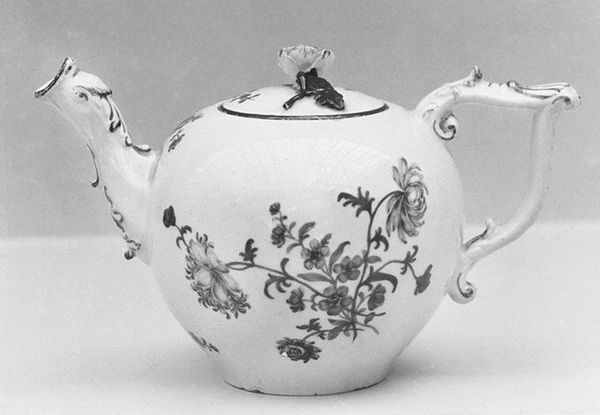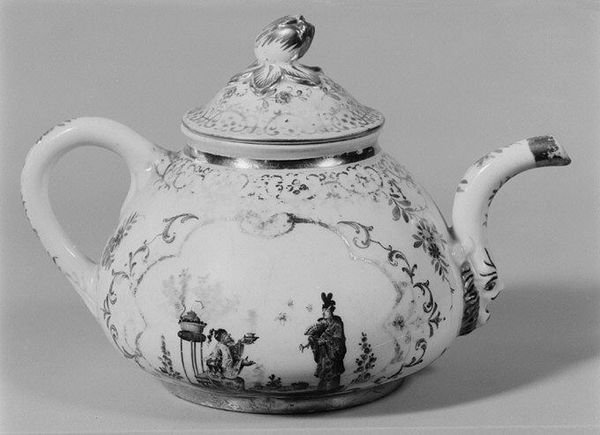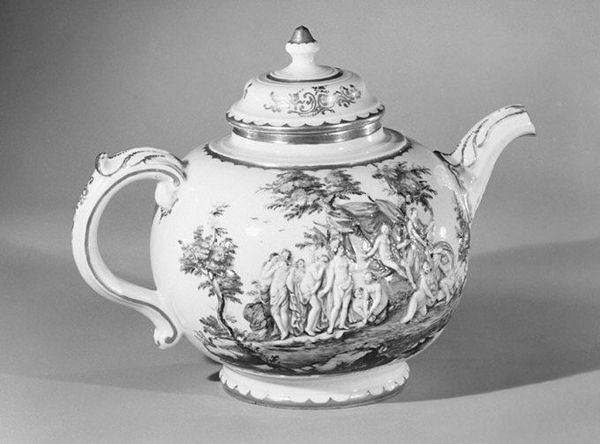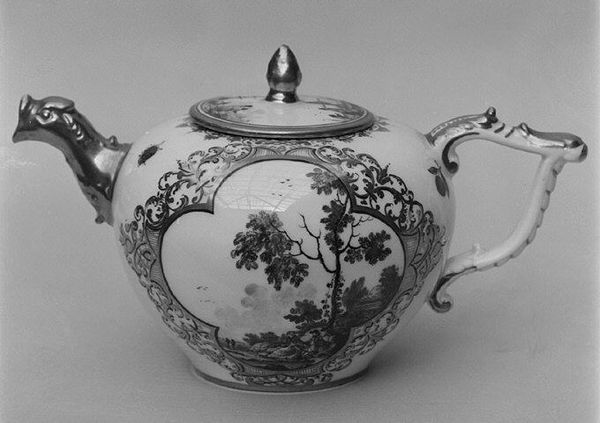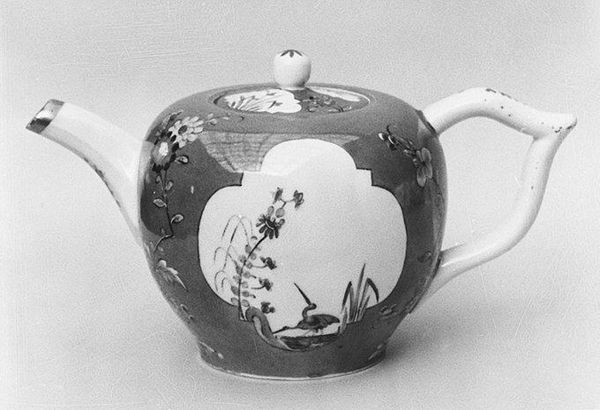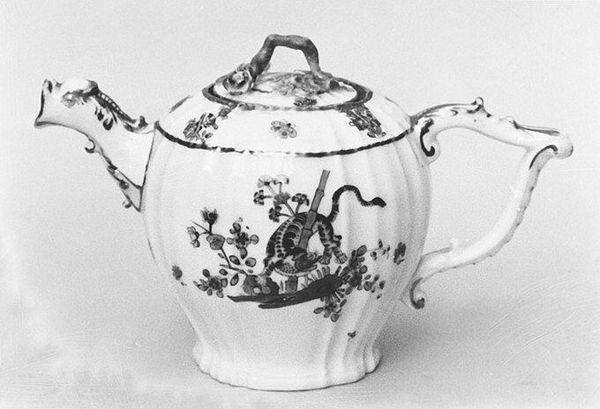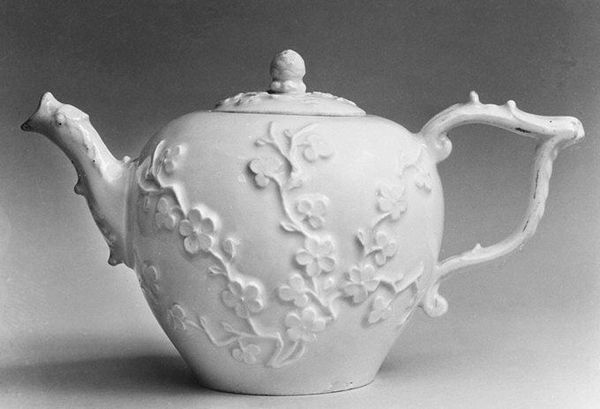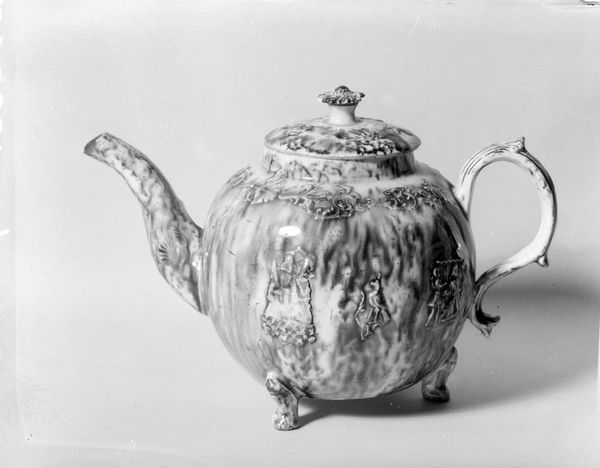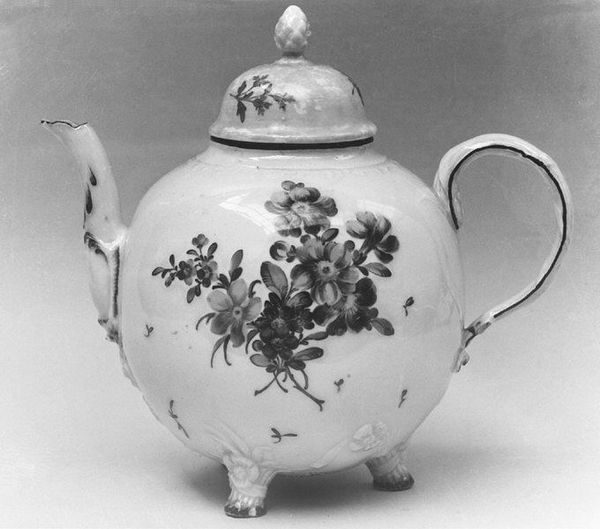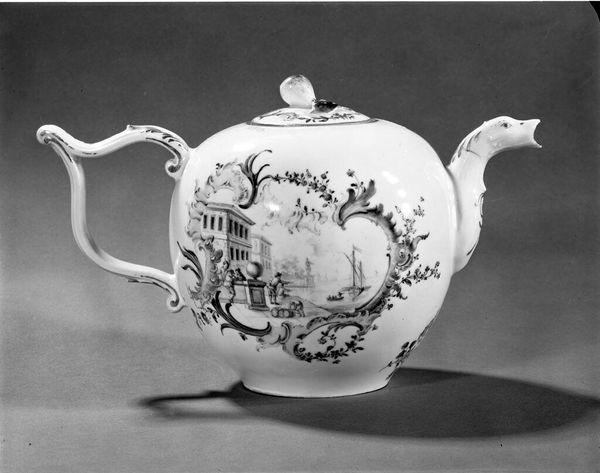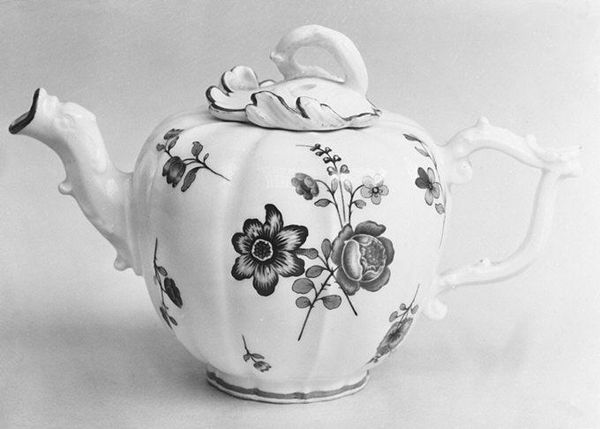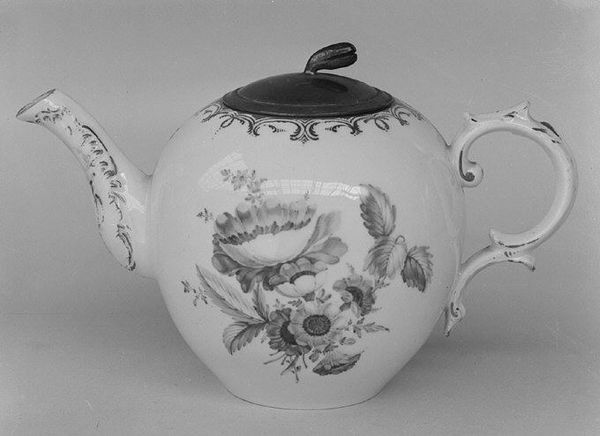
ceramic, porcelain, sculpture
#
ceramic
#
porcelain
#
sculpture
#
decorative-art
#
rococo
Dimensions: Height: 3 1/4 in. (8.3 cm)
Copyright: Public Domain
This is a porcelain teapot made at the Kloster-Veilsdorf Porcelain Manufactory, which was founded in Germany around 1760. This teapot reflects the social and economic transformations of 18th-century Europe. Tea was a luxury item, and porcelain teapots like this were prized possessions that symbolized wealth and refinement. The delicate floral decorations are typical of the period, and show the influence of East Asian porcelain. The creation of porcelain manufactories like Kloster-Veilsdorf was driven by the European desire to replicate Chinese porcelain. These factories were often supported by aristocratic patronage. The production of porcelain was a complex and expensive process, requiring specialized knowledge and skilled labor. As such, the rise of porcelain manufactories reflects the growth of specialized knowledge, commercial exchange and wage labor in the 18th century. To fully understand this object, we might consult historical records of the Kloster-Veilsdorf factory, trade records of tea and porcelain, and social histories of consumption and material culture in 18th-century Europe.
Comments
No comments
Be the first to comment and join the conversation on the ultimate creative platform.

